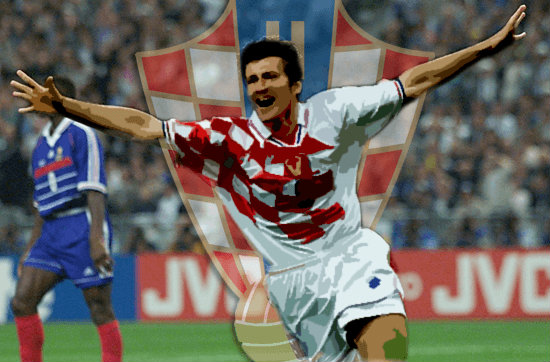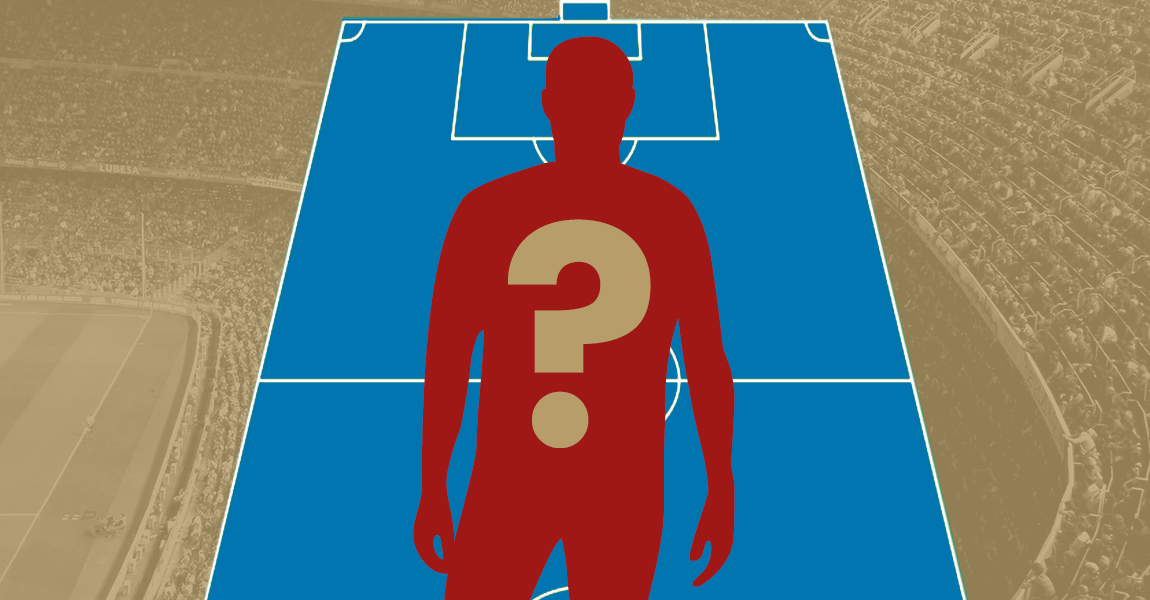I’m not sure how many moments will stay in the collective memory of your run-of-the-mill Croat other than the ones from a July night in 1998. Truth be told, a country like Croatia, young and only recently out of the horrors of war, already had its fair share of memorable events. Nonetheless, for those 25 minutes of the semi-final match between France and the debutants, Croatia, created a generational myth – a myth which, in time, became in equal parts national pride and a burden to the future generations of the Croatian national team.

Even today – and it doesn’t look likely that things will change for as long as the Croatian famous kit features its chess squares – many ask themselves what could’ve been if not for the great Lillian Thuram’s two, and only, goals for the national team. The same goals that destroyed Croatia’s dream of a World Cup final. The Croatian team of the time, mostly composed of members of the famous Chilean expedition which had, bearing the emblems of the Yugoslav youth team, won the U21 World Cup. While Davor Šuker wasn’t one of them, he remains the best center forward Croatia ever had, and France ’98 saw him in arguably the high point of his career.
The late Frane Matošić, legendary member of Hajduk Split, once highlighted the peculiar fact that Šuker was neither ambidextrous nor was a quite convincing header of the ball, both of which is hard to deny. On the other hand, Šuker had an almost uncanny sense of positioning in the box which he used to devastating effect. Even before the World Cup the footballing world already had the chance to witness his talent (for example, his performance at the 1996 European Championship in England where he scored against Denmark’s legendary Peter Schmeichel with a clinical finish). But only after his 6 goals and the title as the World Cup’s Golden Boot in France had him initiated in the footballing center forward’s pantheon.
Šuker left his mark on Croatia’s road to France after providing some of the key goals, like the one against Greece in Thesalloniki, while being paired up with another one of Yugoslavia’s youth team Chilean, Alen Bokšić (the player who scored the decisive goal against Ukraine in Kiev). Bokšić missed the World Cup after suffering an injury blow; a huge handicap for Croatia, which resulted in Šuker bearing most of the team’s goalscoring responsibilities. After all, although Bokšić’s form dipped in Italy (following his successful time with Marseilles where he was crowned Ligue 1’s top scorer in 1993, with 23 goals), he was still considered one of the top forwards of Serie A. In the end, the Croatian team travelled to France with Šuker and the young Goran Vlaović as the two forwards. The team manager Miroslav Blažević used Vlaović sparingly, preferring to play Šuker as the lone striker in the nominal 3-5-2 formation that became, in practice, 3-6-1 or even 5-4-1, with one of Croatia’s creative players joining the midfield. In some ways, Croatia’s current midfield trio for Brazil (Modrić – Kovačić – Rakitić) recalls the creative trio from 1998 (Asanović- Boban- Prosinečki).
Šuker started his scoring spree in the opening matches against Jamaica and Japan, picking up the ball around the eleven-meter mark before scoring with his left foot in both instances. Croatia won both matches and qualified for the second round, losing the only match in which Šuker didn’t score (the 1:0 reverse against Argentina). In the second round Croatia faced the Romanian team lead by the likes of Gheorge Popescu and Gheorge Hagi (“The Carpatian Maradona”). Croatia advanced into the quarters via a somewhat dubious penalty kick after tightly matched up 90 minutes. Two pieces of trivia followed the spot kick – Asanović (the fouled Croatian player) knowingly smiled after being asked about the decision in a post-match interview and Šuker, the player who converted the penalty in the end, had to re-take the spot kick after the referee deemed the first take illegal. Šuker hit the back of the net both times after measuring his pulse and effortlessly planting the ball in the left-hand corner of Bogdan Stelea’s goal. Croatia was through to the quarter-finals, and with an extra motivational boost ahead of that match vs Germany, a strong title contender at the time.
Two years earlier in England, these two teams met in quarter-final as well, but this time it was at the European Championship. That game, played at Old Trafford, had seen Germany go through with a 2-1 victory, with Matthias Sammer scoring a goal after what appeared to be a clear foul made on Croatia’s defender, Nikola Jerkan. Swedish referee Leif Snudell had more than a few dubious decisions on both sides throughout the game, but this one perhaps made the headlines due to the fact that it led to a winning goal. It should also be noted that the Croatian equaliser was scored by – take a guess – Davor Šuker, when he dribbled pass Kopke after an error from German defenders. The two sides met again at the Stade Gerland in the World Cup, and Croatia had no love lost towards Berti Vogs’ side. With three beautiful goals Croatia marked that night with the biggest win in its history. Šuker scored the third one with a placed shot that ended up under Kopke, making the famous goalkeeper look ordinary. With four goals to his name, Šuker had already become a serious challenger for a World Cup Golden boot award. Croatia booked its place in the semi-final clash against the hosts, France.
Stade de France, World Cup semi-final. Both Croatia’s and Šuker’s fairytale seemed to be destined for a happy ending after Šuker scored an opener in 46th minute, once again showing his amazing anticipation. He followed the path of a great through ball by Asanović, collected it, and managed to put it past Barthez despite the lack of space. At that very moment, Croatia was at the verge of accomplishing the impossible – knocking France out of the tournament and making its way into the final.
But, two of the most significant moments in Lillian Thuram’s history as a French international sent Les Bleus, deservedly, into the final match versus Brazil. However, Croatia hadn’t succumbed to lethargy, as the bronze medal had yet to be forged in a third-place playoff versus the Dutch. In an action packed match, Croatia managed to get the best out of their few chances with a 2-1 victory, leaving Holland in a frustrated closure where they had perhaps been the better side in both, the semi-final and third place playoff, but failed to capitalize the advantage. Šuker however had another obligation in that match; if he managed to score a goal vs Holland, he would leave Ronaldo two goals behind in the race for the Golden boot ahead of the Final. And so he did, scoring a victorious goal with a beautifully placed Outside of the Boot shot, that went in between Jaap Stam’s legs and in the lower corner of Van Der Sar’s net. That goal was more than a consolidation for Croatian side and Šuker as well, ending the tournament in fashion with six goals, bronze medal around his neck and a Golden boot in his hands.
Šuker never really had the chance to repeat his big success, considering the fact that he was well over his peak in Korea & Japan four years later, where Croatia just couldn’t find a proper balance between the remains of that famous nineties’ generation and the youngsters that were introduced into the team. The team made an early exit from the tournament after just three games in group stage, which also meant Šuker ending his lasting career in the Croatian jersey, with 45 goals in 69 matches – a goalscoring record that probably won’t be surpassed any time soon (Eduardo is currently first on the list behind him with 29 goals, though keep in mind that he is now thirty-one and he has been dropped from being a first-team regular for some time now). His current position as the Croatian FA chairman isn’t all that great, with Šuker and his cabinet being linked to various affairs that made him unpopular with large parts of the Croatian football community, but for many he will always remain a legendary striker and a number nine that led Croatia to its biggest glory.
This article was written by Juraj Vrdoljak. Follow him on Twitter @sobonja
Read all our World Cup 2014 content here
- Scout Report | Mario Pašalić : Croatia’s Upcoming Talent - November 25, 2014
- Atletico Madrid Tactical Preview: How will Diego Simeone’s side set up in the 2014-15 season? - August 24, 2014
- World Cup Heroes: Davor Suker and the 1998 World Cup - June 23, 2014
























































